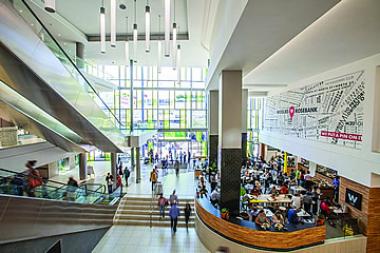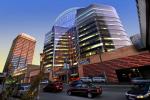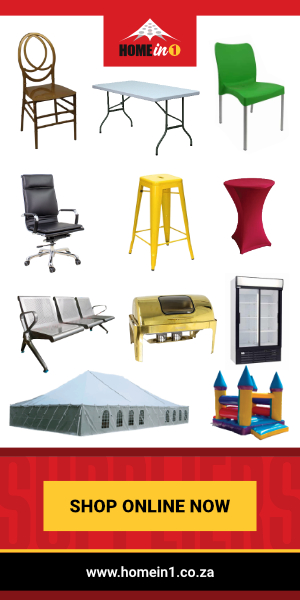Research uncovering opportunities in SA's shifting retail landscape
 Creative, niche, differentiated store types now seem preferred to replicated options, and smaller, focused formats seem favoured over large, cumbersome ones.
Creative, niche, differentiated store types now seem preferred to replicated options, and smaller, focused formats seem favoured over large, cumbersome ones.
The landscape of shopping centres in South Africa is adapting to cater for customers’ changing wants and how those customers believe those wants will be met.
The traditional shopping centre model turns its head, according to indicators emerging from research covering 2-million square metres of retail space across SA.
Creative, niche, differentiated store types now seem preferred to replicated options, and smaller, focused formats seem favoured over large, cumbersome ones, the research shows.
“This crucial trend has implications for flexibility, sizing, mix, design, rentals and retail classifications. All of these need careful consideration in order to drive market share and profitability,” says Belinda Clur, MD of Clur Research International who also chairs the sub-Saharan African research group of the International Council of Shopping Centres, the global industry body, and sits on their international groups.
The shifting trends in consumer behaviour at a number of SA’s prime retail properties are monitored by Retail LiveTM, an interpretive early warning system for shopping centres, developed by Ms Clur.
Shopping centres play a significant and catalytic role in driving economic growth, says Marius Muller, CEO of Pareto.
“It is therefore critical that these leading indicators are understood in order to best meet current consumer needs, capture elusive spend and help support SA’s growth,” he says.
Ms Clur’s earlier research indicates that up to 25% of SA’s final consumption expenditure of households may be driven by shopping centre spend. Total final consumption expenditure of households in turn makes up as much as 60% of gross domestic product. Employment contributions are also impressive.
Amelia Beattie, head of Stanlib Direct Property Investments, says: “The strong economic significance of shopping centres shows the sector’s success, dominance and resilience and that it has been an early identifier and adapter to key shifts.”
Says Ms Clur: “We live in an increasingly demanding world driven by ‘glocal’ environmental, population, economic and safety pressures. The consequence of this is stress due to resultant time, space and security concerns. This theme has numerous related and intertwined trend implications for future successful shopping centre strategy.”
Seven key trends have been emerging from the findings, she says, and within their context, one had to be sensitive to specific catchment profiles.
1. Clear identity and super convenience
Time is now a luxury, and therefore clear focus is necessary. Super-convenience and clarity are now required as consumers need to easily identify the shop and the product allowing for easy, quick and focused shopping. Says Clur :“The future is for brands that position themselves at a pitch-perfect level in this respect.” In certain cases, a simple store colour change, which has had the correct positive association in the consumer’s eye, has driven staggering trading increases.
2. From replicate to create
The once high demand for brands to roll out replica stores, irrespective of location, is over. Consumers are now demanding differentiation, and that brands, be they shopping centres or stores, innovate to provide a unique and different experience and place themselves with a higher degree of integrity and adapt to provide more local flavour. Consumers are tired of sameness, desire fresh change and are more willing to spend money on appealing new concepts.
3. Personal branding and luxury
The current rejection of replication aligns with the growing personal branding trend. Self expression and original style are now mainstream and celebrated. Resultant personal adornment and grooming is increasing. It is reflecting in the significant rise and success of boutique fashion, luxury brands, hairdressers, sunglasses and accessories stores. Says Clur :“The connection between the brand and the consumer is now far more intimate than it has ever been, and retail needs to fully understand, connect with and serve the personal brand. Global luxury brands cleverly understand this by propping up the personal brand with international status.”
4. Wellness movement
A value shift is underway and consumers are increasingly seeking life balance and contentment. This is an important, growing trend which has driven increased health and lifestyle choices. Key areas that are continually adapting as organic, natural and durable alternatives gain momentum are cosmetics, food and the home. This evolution opens opportunities for food, spas, health and beauty, home furnishings, bathroom and kitchen design. The trend marks the emergence of a new retail category distinct from general health and beauty.
5. Gourmet glamour
Sophisticated and glamorous cooking is increasingly fashionable. The consumer has developed an informed and discerning palate. Trendy and creative restaurant formats and designer kitchenware are doing well, and there is a clear gap for refined and experiential gastronomy. This gap is starting to be filled by artisanal food and beverage creation, boutique beers and the expanding coffee culture.
6. Information overload and virtual vanity
Technology and resultant social, knowledge and shopping platforms have caused an information overload. Therefore retail players must be highly strategic with online marketing efforts to successfully win their slice of virtual attention. Interestingly, online shopping in South Africa has not surged in line with international trends, as SA shoppers still show a preference for the tactile shopping outing. However, chosen shopping destinations seem to be increasingly driven by online and price comparison influences.
Virtual vanity has become rampant as a result of easy, quick and wide social exposure – so much so that people are recording their lives rather than living their lives. The mall and retailer should therefore focus on becoming the physical backdrop of choice for online personal promotion. The surge in mobile communications supporting these trends has marked the emergence of a new cell phone retail category distinct from general electronics, with different trading patterns.
7. Malls as ‘The Third Place’
Malls have the perfect opportunity to capitalize on their natural positioning as the ‘third place’. Unlike the first place (home) and the second place (work), the third place is important for civil society, democracy, civic engagement and establishing feelings of a sense of place, says Ray Oldenburg, an American urban sociologist in his influential book ‘The Great Good Place’. Malls should focus on providing a lifestyle trend-driven and tranquil community meeting point with a social, relaxation, design and shopping experience comprising care, ‘human touch’, greenery, water features and a tactile experience that cannot be duplicated on-line. ‘Malls as the third place’ is a growing phenomenon not only in Europe, but also in South Africa


















